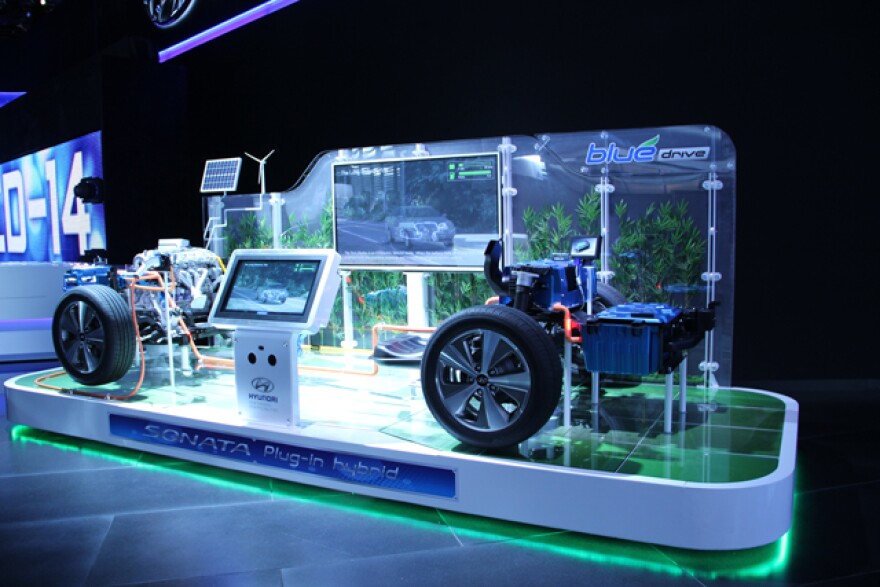It used to be that fuel-efficient cars were not taken all that seriously. But that has changed.
Jim Motavalli is the author of High Voltage and a blogger for the New York Times and Car Talk. He spoke with me for today's Environment Report from the North American International Auto Show.
Motavalli points out that there's no special section for "green cars" at the auto show.
"I think what we’re seeing is green technology has been incorporated into pretty much all of the cars on display here, so the green cars aren’t in a little special penned-in area. That’s inherently a good thing. And maybe at this auto show 2013, we’re not seeing a lot of electric car introductions or plug-in hybrid introductions; what we’re seeing is 'eco' incorporated into every model that’s introduced here, including the Corvette Stingray and the Grand Cherokee Jeep SRT, both of which have eco modes or eco buttons, because every automaker is being driven towards the 2025 goal of 54.5 mpg fleet average, which the federal government is demanding."
He says California also has standards requiring automakers to produce zero-emission battery cars.
"So, these things are very powerful drivers. Also, people want very fuel-efficient cars. So, even the big performance vehicles that were V8s in the past tend to be V6s or even turbo four cylinders now. So, we’re moving downscale and we’re moving up in terms of the average fuel economy. Even that Corvette could maybe get 30 mpg on the highway, and that would’ve been unthinkable 30 years ago."
Motavalli says automakers are working hard to meet the new Corporate Average Fuel Economy (aka CAFE) standard with a panoply of technologies.
"It’s electric cars, yes, battery-electrics, nearly every automaker has that, but they also have plug-in hybrids and it should not be discounted that they have these regular gasoline cars with very fuel efficient engines. They’re also getting into the very low end of the subcompact market, with cars like the Ford Fiesta and the Chevy Spark, which they probably would not have competed in previously. American automakers are really looking at the lower end of the market in a way they hadn’t done before. So it’s no one technology is getting them to the goal; it’s a lot of things combined, but they are very much mindful of reaching that 54.5 mpg goal."
He predicts that 20 or 30 years from now, most people will probably be driving some form of plug-in hybrid or battery-electric car... and your car will probably do tricks.
"I think we’ll see degrees of autonomy in cars – that means self-driving. I think by that time if we’re not in just totally self-driving cars, we will be in vehicles where many of the functions are done for you. Like the car will be retrieved by pushing a vehicle on your remote control – it’ll come out of the garage and pull up for you. And then, when you need to put it away, you’ll push a button and it’ll go away. There will be things like that. Maybe not total autonomy, maybe you’ll have some function as a driver. But I think we’re definitely moving away from your having to control the car totally. I think that’s pretty much going to be a thing of the past – every trend is pointing that way. So I think you’re likely to be driving a semi-autonomous electric car at that time."




